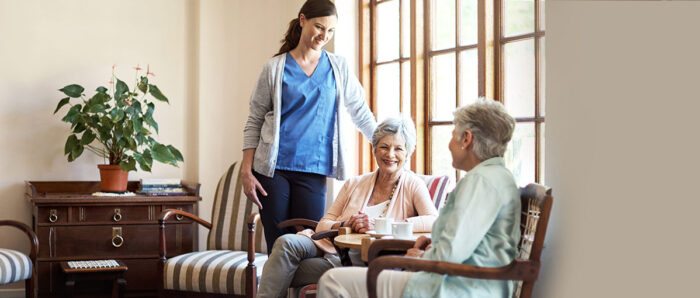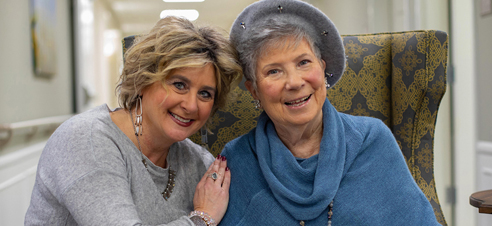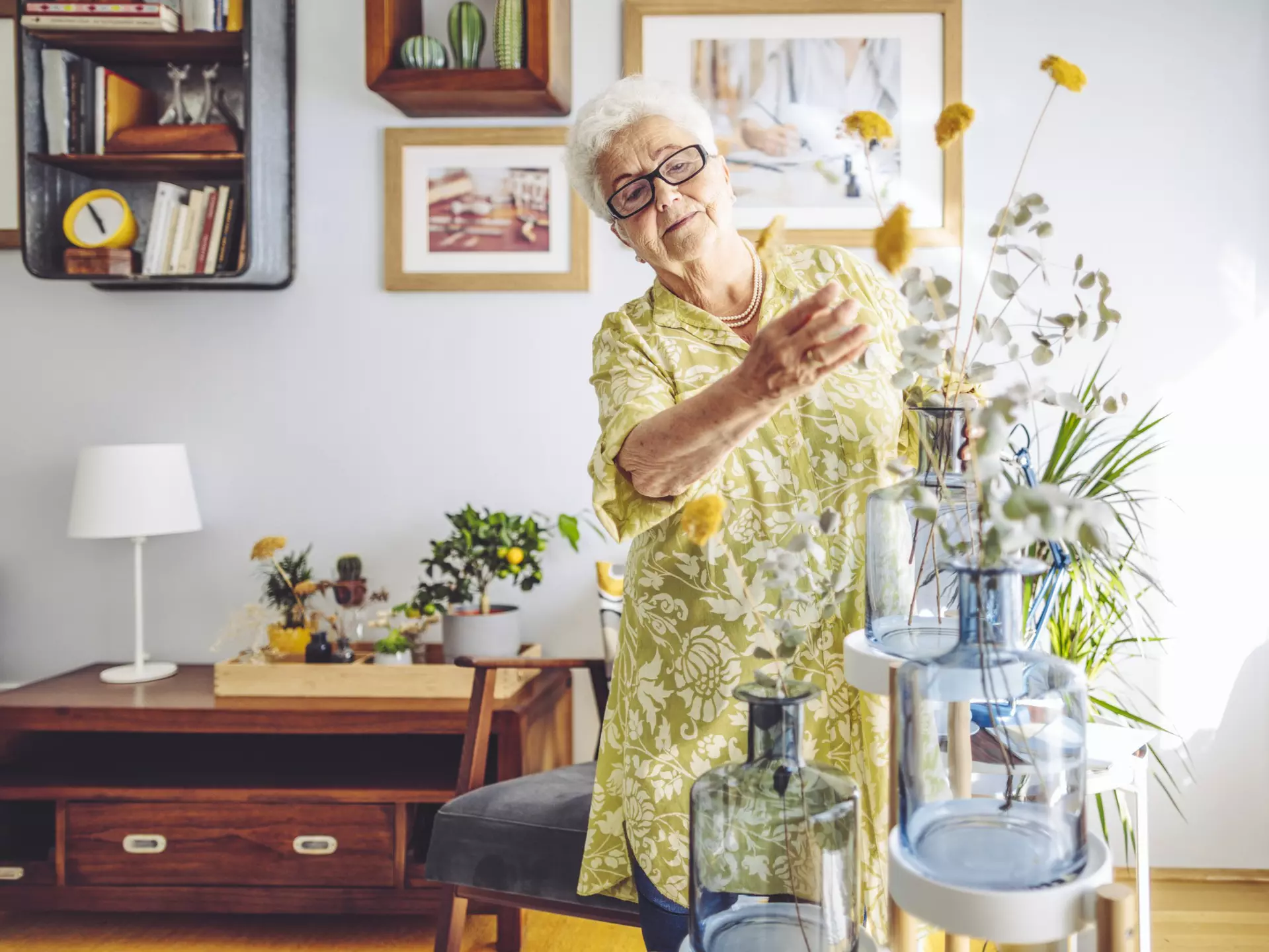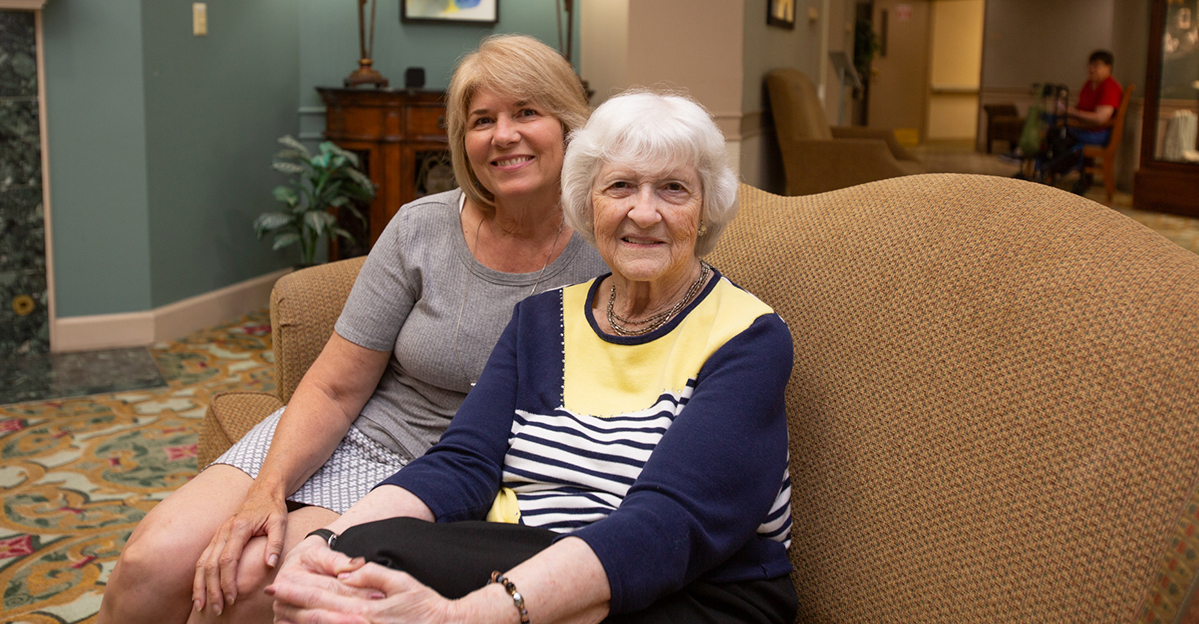Moving to an assisted living community is a great opportunity to downsize your personal belongings, keeping the items that bring joy or serve a purpose, and letting go of those that add to the clutter. Despite the potentially smaller footprint of a new apartment, you can have fun transforming your new space into a home you love, and it doesn’t have to be stressful or overwhelming!
In this comprehensive guide, we share some practical tips on decorating a senior living apartment — to help you create a cozy, safe, and comfortable living space.
Why Decorating a Senior Living Apartment Is Important
Decorating a senior living apartment can help you feel at home. But there are more benefits in addition to making it feel more welcoming, including:
- Promotes Comfort and Familiarity: Creating a cozy space that reflects your personality can help you feel at home in your new surroundings. If you’re unsure where to start, we share some great assisted living decorating ideas further below!
- Promotes Socialization: A homey and inviting space with interesting decor pieces can be a great place to entertain or relax with friends.
- Improved Practicality: Moving into a new space might require you to make some adjustments to fit your specific needs. These can include changing the layout, upgrading lighting, and installing mobility aids.
- Emotional Well-Being: Your surroundings can affect how you feel. Whether you’re switching up the curtains or hanging your favorite art pieces, adding a personal touch to your space can have a positive impact on your mood and overall well-being.
Key Differences Between Typical Apartments and Assisted Living Apartments
One of the most notable differences is the square footage. Most assisted living communities offer different room sizes and floor plans, but they’re generally smaller compared to average family homes. Another key difference lies in the design.
Because assisted living apartments are designed with older adults in mind, they tend to prioritize accessibility features over flashy, less practical features. These might include things like non-slip flooring, wider doorways, and ramps, to help accommodate seniors of all abilities.
Some communities may or may not allow residents to make certain modifications. For instance, some communities may have strict rules about modifications like painting the walls or changing the flooring. Before you start decorating, it’s always a good idea to check with community employees regarding whether there are guidelines or restrictions in place or not.
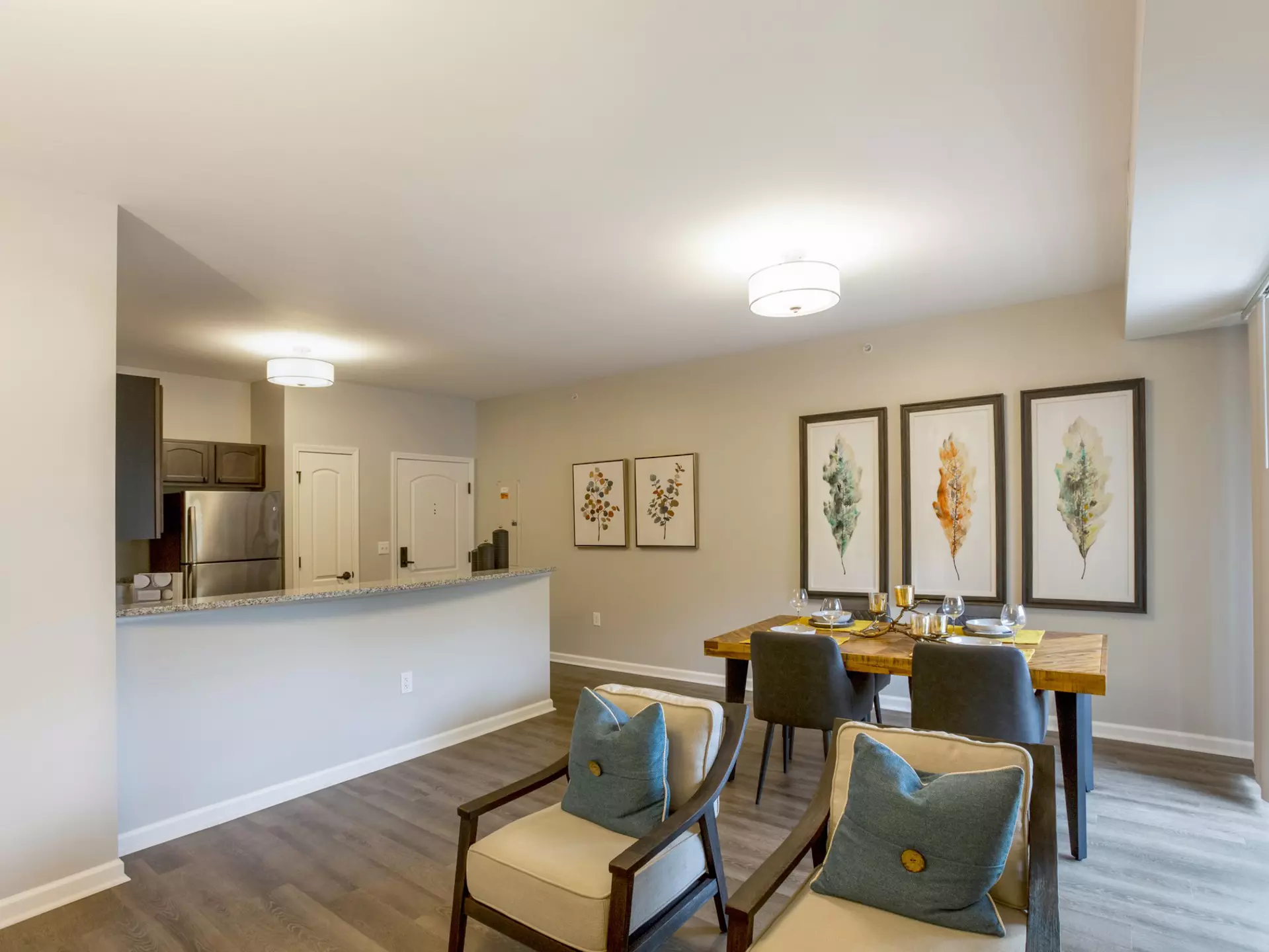
Step 1: Plan Your Layout
The first step is to think about what layout works best for you. Because of the smaller space, you might have to choose smaller furniture pieces with multifunctional options, like a lift-top coffee table or storage ottomans. Built-in features, like a window or closet, can also dictate the overall layout of your space.
Here are some essential things to keep in mind when planning your apartment layout:
- Know Your Measurements: To avoid overcrowding your space, take all the measurements of the rooms. Note the width, height, and length of the walls, as well as where the outlets and light fixtures are situated.
- Sketch a Floor Plan: You can use sketching and planner tools to help you plan your floor space and ensure everything fits properly.
- Identify Focal Points and Pathways: When decorating a senior living apartment, identify fireplaces, focal walls, and windows to draw attention to those areas. Set your furniture away from pathways to avoid bumping into things when moving around.
Step 2: Declutter and Downsize
Now that you have a clear vision of your new space, it’s a good time to get rid of any items you don’t want, including broken furniture, expired cleaning products, or other non-essential items.
After years of accumulating belongings, downsizing can be a stressful process for many seniors. It’s important to give yourself adequate time to sort through your possessions, but decluttering doesn’t mean getting rid of your favorite mementos. Decide what to keep, donate, or sell.
Step 3: Functional Essentials and Safety Requirements
Whether you’re decorating your own apartment or helping someone you love, it’s important to cover the basics regarding safety. Most senior living apartments come equipped with safety features like grab bars and non-slip flooring, to help reduce the risk of falls. In some cases, residents may have to make several adjustments to accommodate their specific needs, including:
- Non-Slip Floormats: The risk of falling is especially high for older adults. If you’re helping a loved one decorate their apartment, rugs with non-slip backing can be a great addition, especially if the original floors are slippery.
- Get Rid of Clutter: Avoid having scattered items in your space, as these can be trip hazards. Store any unused items and always ensure pathways are clear of any obstruction.
- Proper Lighting: Proper lighting can reduce the risk of falls or accidents. Ensure all rooms and hallways have adequate lighting to allow you to move around safely.
- Handrails and Grab Bars: Installing features like grab handles and handrails can help provide extra support, particularly for individuals with mobility challenges or balance issues. However, it’s important to check community guidelines before making any modifications.
- Walk-In Shower: A walk-in shower with seating can help individuals with mobility or balance issues shower safely. A flexible, handheld showerhead can also be a great safety addition.

Step 4: Decorating Elements for a Senior Living Apartment
It’s important to balance design and functionality when decorating a senior living apartment. Here are some key things to keep in mind when selecting decorating elements:
- Furniture Selection: The size and layout of your apartment will determine the size and type of furniture you choose. Selecting options with supportive, soft, and plush cushions for ample support is always a good idea. Microfiber and similar fabrics are usually easier to clean. It’s also important to pick a height that is comfortable for you. Chairs with armrests provide extra comfort and sturdiness, which can be particularly helpful for people with mobility issues. Recliners can be perfect for relaxing, reading a book, or enjoying your favorite TV shows.
- Storage Solutions for Small Spaces: Most assisted living apartments provide sufficient storage options. You can use multi-functional, foldable furniture that looks aesthetically pleasing and can be put away when not in use. Place frequently used items at eye or waist level to minimize reaching and bending multiple times. Shelf organizers and clear storage containers can provide extra storage options.
- Add Natural Light: When selecting curtains for your new home, it can be a good idea to pick light-colored fabrics that allow natural light while maintaining privacy. You can install adjustable shutters to control the amount of light that comes in.
Flooring: Easy-to-maintain and clean flooring, including vinyl, laminate, and hardwood floors, can help reduce the risk of falls. Soft and easy-to-clean rugs are a good addition to non-slip flooring. Avoid fall hazards like rugs with tassels and ensure the installation is even and smooth. - Incorporate Plants and Natural Elements: Live plants can add beauty to a space, but maintenance can be difficult for some seniors. Choosing plants that require minimal watering and tending, like pothos and snake plants, can help eliminate hassle.
Consider Hobbies and Activities: If you are a book lover, you can install book shelves and reading lamps to support your hobby. Create a designated space that is easily accessible for your art if you are crafty. If the environment around you allows, plant a garden, or consider a raised garden bed or container garden for limited spaces. Have your gardening tools safely tucked away but easily reachable.
Step 5: How to Personalize Your Space
There’s no “right way” to personalize your space; assisted living apartment decorating is all about creating an environment that feels right for you. You could display your heirlooms, cherished family photos, travel souvenirs, and snapshots of loved ones.
Prints, posters, and artwork can also uplift the look of your room. If you’re a nature lover, add a few potted succulents for fresh air and a touch of greenery. While beautiful flowered plants are the best for natural sweet scents, they’re usually harder to maintain.
It’s easy to get carried away when decorating a senior living apartment. To avoid clutter, only display items you cherish rather than putting everything out at once. To keep things interesting, you can switch your decor items out from time to time.
Organize your mementos in a way that tells a story based on timelines, and use open-hanging shelves to showcase tiny but meaningful pieces. For throw pillows, decor items, bedding, and curtains, use a color palette that blends in with the general layout of the room for a clean look!
Step 6: Bathroom Decorating for Comfort and Safety
Many people forget about the bathroom when decorating their senior living apartment. It’s always best to prioritize pieces that fit your taste while making your bathroom safer and more accessible:
- Bathroom Safety Accessories: Non-slip mats in the bathroom are an accessory and a means of keeping safe while taking showers. For added comfort, install raised toilet seats to avoid straining your body by bending too much. Use a handled showerhead and a shower bench to sit on while cleaning areas that are difficult to reach.
- Lighting: Poor lighting can increase the likelihood of falling or hurting yourself in the dark. To help light up your home at night, have motion-censored, illuminating nightlights installed in the hallway and bathroom.
- Organize Personal Care Items: Store your cotton balls, toothpaste, toothbrush, dental floss, Q-tips, and other miscellaneous items in clear containers for easy access. You can also label the containers for better organization. Install open shelves and drawers in reachable places and store your toiletries neatly.
- Utilize Smart Storage Solutions: Install a shelf or cabinet over the toilet to maximize the space. Store extra bathroom supplies under the sink in baskets or plastic containers. A rolling cart can be useful for storing cleaning supplies, and it’s easy to move around.
Step 7: Kitchen Decorating Tips
Store frequently used kitchen items on lower shelves and drawers to avoid reaching for them. Install pull-out shelves to help reach items in the back. To maximize the space further, use Lazy Susans to hold items like spices or pots and pans. This will make accessing items easier.
The microwave should be on the countertop and easy to access. Opt for appliances with easy-to-read controls that are simple to operate. Appliances that shut off automatically when they are out of use for a while will make life easier as well.
Choose chairs with armrests for added comfort and support for the dining area. Warm lighting and a few flowers can bring an inviting vibe to the space.
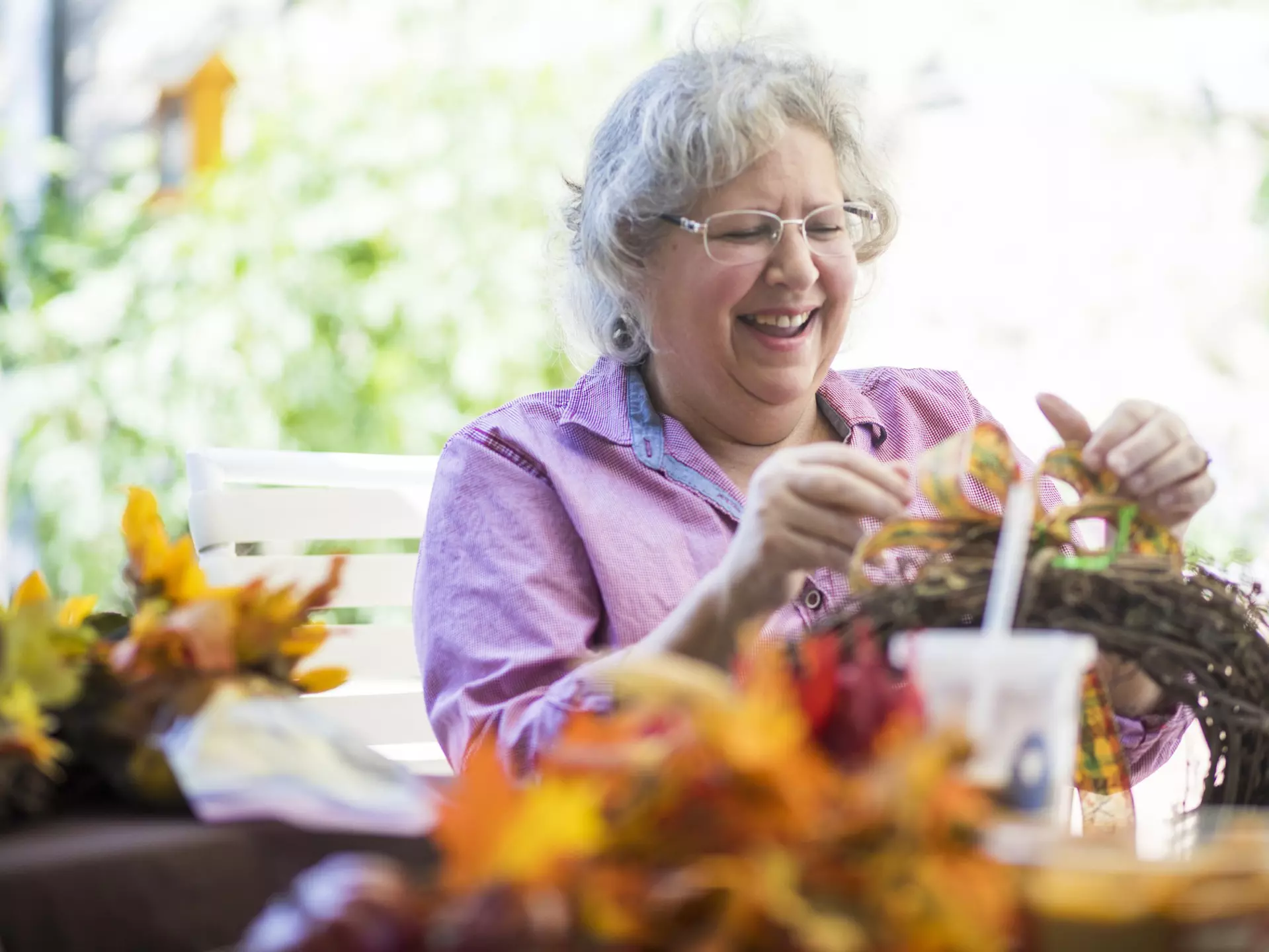
Step 8: Seasonal Decorating
Seasonal decorations can be a great way to add a festive touch during holidays. For seasonal decor, swap out throw pillows and blankets with patterns and themes associated with each season. Cozy textures work well in autumn, while brighter colors are perfect for spring. As for tabletop decor, you can have pinecones and pumpkins in the fall and flowers in the spring and summer.
If you’re decorating a smaller space, you could add miniature holiday decorations for a festive feel while maximizing the available space. Instead of decorating everywhere and overcrowding the space, focus on key areas such as the dining table, the entryway, or the main door. Tabletop decor like colored glassware can be a good option in such instances.
The costs of regular refreshes can quickly add up over time. If you are on a budget or do not want to splurge on seasonal decor only to change it again, you can use artificial flowers and plants. These require little to no maintenance. For art pieces, you can use printable seasonal art in unique frames to decorate your intended areas. You can also repurpose ornaments, vases, and any other decor of your choice.
At StoryPoint Group Communities, Your Well-Being Is Our Priority
Moving to a senior living community is a big step, and it can be a difficult journey for everyone involved. As you explore options for yourself or a family member, we’d like you to know we’re here to help guide you. If you have more questions about assisted living or a different support service, contact us, schedule a tour of the nearest StoryPoint Group community, or give us a call at 1-844-275-9990.




